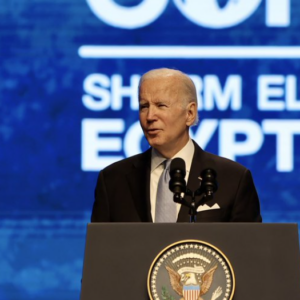The House Committee on Oversight and Accountability chairman complained recently that Energy Secretary Jennifer Granholm has not scheduled an appearance before the panel.
One critical question for the secretary is what her department’s push for new energy efficiency standards in new homes will cost Americans. While she and the White House have touted reduced energy use that would result in “$162 in annual savings per residential unit,” what is the actual price tag when factoring in upfront costs? What is a realistic estimate of how much the standards would reduce damage from global temperature increases due to man-made warming?
Climate advocates acknowledge that “an overlooked conflict in climate policy” is that “proposals to make buildings and communities more climate-friendly often collide with efforts to keep housing affordable,” Scientific American notes.
Americans are already dealing with skyrocketing home prices, which have increased 25 percent from January 2021 to February 2024.
President Biden recently announced various proposals — largely government handouts — to make housing more affordable. But those will likely drive up demand and increase home prices.
The Inflation Reduction Act of 2022 included $1 billion in grants to state and local governments to encourage them to adopt updated codes on residential buildings’ energy efficiency — via insulation, lighting, water heating and more — in particular, what’s known as the 2021 International Energy Conservation Code (2021 IECC).
“There’s no debate that boosting the energy efficiency of new homes often increases upfront costs,” The Washington Post noted, “but the builders appear to be inflating the numbers.”
The main federal study of the cost-effectiveness of the 2021 IECC finds the national average for recouping the additional construction costs through reduced energy bills would be 10 years, with an average cost savings of $2,320 at the end of a 30-year mortgage. However, the study uses a 3 percent mortgage rate, a 1.4 percent annual inflation rate — much lower than today’s rates — and a 12 percent federal income tax rate, lower than many Americans’ rates.
In contrast, an estimate from the Home Builders Association of Greater Kansas City in Missouri estimates the code would add an estimated $31,853 to the price of a new home. “If the consumer had to finance these costs in a 30-year mortgage at 4% interest, the additional annual mortgage expense would be $1104/year, costing them $429 MORE than what they were saving in energy costs.”
The 4 percent rate used is again outdated, and the additional cost would be considerably larger. “Further, for every $1,000 added to the price of a home, 951 families are priced out of the market,” the association estimates.
Even if the builders are “inflating” the costs, as the Post puts it, let’s not accept that meeting new energy-efficiency standards will save Americans money without some very solid evidence.
Given the potential cost of climate-change initiatives, 26 senators wrote to the administration late last year urging them to abandon these new standards and to “conduct an honest evaluation” of their cost.
Overall, complying with regulations — environmental and otherwise — imposed by all levels of government was estimated to comprise a whopping average of 40.6 percent of total development costs of multifamily homes, according to a 2022 report by the National Association of Home Builders. The largest category of that, at 11.1 percent of total development costs, was from the increase in costs to comply with changes to building codes, often regarding energy efficiency, over the past 10 years.
“Regulations cover a wide range of issues, and while they may be well-intentioned, the costs and burdens of any regulation must be carefully weighed against the benefits,” the report states.
NAHB’s most recent data on new single-family homes found that government regulation adds 23.8 percent, or $93,870, to the final price ($394,300) of an average house.
If the administration wants to make the American dream of owning a home more of a reality, it needs to look at the actual cost of regulation.


